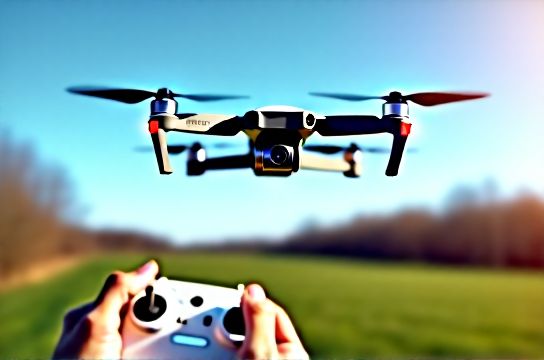Drone Piloting Made Simple for First Time Users
- 时间:
- 浏览:17
- 来源:OrientDeck
So, you’ve just unboxed your shiny new drone—congratulations! Whether you’re aiming to capture breathtaking aerial shots or just want to feel like a mini air traffic controller, flying a drone for the first time can be both exciting and a little intimidating. But don’t worry—we’ve got your back. This beginner-friendly guide breaks down everything you need to know to go from clueless to confident in under 30 minutes.

Why Drones Are Easier Than You Think
Gone are the days when drones were only for tech geeks or Hollywood cinematographers. Today’s consumer drones—like the DJI Mini series or Autel Evo Nano—are designed with beginners in mind. With features like automatic takeoff, GPS stabilization, and obstacle avoidance, modern drones practically fly themselves.
In fact, a 2023 survey by the Consumer Technology Association found that 78% of first-time drone users felt comfortable flying within their first two flights. The secret? Understanding the basics before hitting the skies.
Step-by-Step: Your First Flight Checklist
- Check local laws: In the U.S., FAA rules require registration for drones over 250g. Fly below 400 feet and avoid airports.
- Charge everything: Battery, remote, and phone. Nothing kills vibes like a dead controller.
- Calibrate the compass: Do this in an open area away from metal structures.
- Pick the right spot: An empty park or backyard with minimal wind (under 15 mph is ideal).
Master the Controls Like a Pro
Most beginner drones use a standard control layout:
| Control Stick | Action |
|---|---|
| Left Stick Up/Down | Ascend / Descend |
| Left Stick Left/Right | Yaw (rotate left/right) |
| Right Stick Up/Down | Move Forward / Backward |
| Right Stick Left/Right | Strafe Left / Right |
Pro tip: Practice in "Headless Mode" if your drone has it. This means the controls stay consistent no matter which way the drone is facing—perfect for beginners.
Common Mistakes & How to Avoid Them
We’ve all been there. Here are the top blunders new pilots make—and how to dodge them:
- Flying too high too fast: Start low (10–20 feet) to get a feel for responsiveness.
- Ignoring wind conditions: Even 20 mph gusts can throw off small drones.
- Forgetting to check camera settings: Want 4K video? Make sure it’s turned on before takeoff.
Flight Stats Every Beginner Should Know
Here’s a quick comparison of popular starter drones:
| Drone Model | Weight | Flight Time | Max Range | Price Range |
|---|---|---|---|---|
| DJI Mini 4 Pro | 249g | 34 min | 20 km | $759 |
| Autel Evo Nano+ | 249g | 28 min | 12 km | $699 |
| Skydio 2+ | 640g | 27 min | 3.5 km | $999 |
Note: Staying under 250g means you may avoid registration in some countries—smart move for casual flyers.
Final Tips for Smooth Skies
Fly during golden hour for stunning visuals, always keep your drone in sight, and never fly near emergency response operations. And remember: every expert pilot was once a newbie who didn’t crash… much.
With a little practice and this guide in your pocket, you’ll be capturing cinematic footage in no time. Now go on—take flight!